Control Analysis of a Real-World P2 Hybrid Electric Vehicle Based on Test Data
Abstract
1. Introduction
2. Powertrain System and Vehicle Test
2.1. Powertrain System of Ioniq HEV
2.2. Vehicle Test
2.3. Precalculation for Control Analysis
3. Control Strategy
3.1. Engine On/Off Control
3.2. Shifting Control Strategy
3.3. Engine and Motor Control Strategy
4. Conclusions
Author Contributions
Funding
Conflicts of Interest
References
- Taniguchi, M.; Yashiro, T.; Takizawa, K.; Baba, S.; Tsuchida, M.; Mizutani, T.; Endo, H.; Kimura, H. Development of New Hybrid Transaxle for Compact-Class Vehicles. SAE Techn. Pap. 2016. [Google Scholar] [CrossRef]
- Furukawa, T.; Ibaraki, R.; Kimura, H.; Kondo, K.; Watanabe, M.; Mizutani, T.; Hattori, H.; Takasaki, A. Development of New Hybrid Transaxle for Sub-Compact-Class Vehicles. SAE Techn. Pap. 2012. [Google Scholar] [CrossRef]
- Fushiki, S. The new generation front wheel drive hybrid system. SAE Int. J. Altern. Powertrains 2016, 5, 109–114. [Google Scholar] [CrossRef]
- Imamura, T.; Tabata, A.; Matsubara, T.; Iwase, Y.; Kumazaki, K.; Imai, K. Concept and Approach of Multi Stage Hybrid Transmission. SAE Techn. Pap. 2017. [Google Scholar] [CrossRef]
- Kato, S.; Ando, I.; Ohshima, K.; Matsubara, T.; Hiasa, Y.; Furuta, H.; Mori, Y. Development of multi stage hybrid system for new Lexus Coupe. SAE Int. J. Altern. Powertrains 2017, 6, 136–144. [Google Scholar] [CrossRef]
- Okuda, K.; Yasuda, Y.; Adachi, M.; Tabata, A.; Suzuki, H.; Takagi, K.; Atarashi, T.; Horie, R. Development of multi stage hybrid transmission. SAE Int. J. Altern. Powertrains 2017, 6, 77–83. [Google Scholar] [CrossRef]
- Miller, M.A.; Holmes, A.G.; Conlon, B.M.; Savagian, P.J. The GM “Voltec” 4ET50 Multi-mode electric transaxle. SAE Int. J. Engines 2011, 4, 1102–1114. [Google Scholar] [CrossRef]
- Zhang, X.; Li, S.E.; Peng, H.; Sun, J. Design of multimode power-split hybrid vehicles—A case study on the voltec powertrain system. IEEE Trans. Veh. Technol. 2016, 65, 4790–4801. [Google Scholar] [CrossRef]
- Conlon, B.M.; Blohm, T.; Harpster, M.; Holmes, A.; Palardy, M.; Tarnowsky, S.; Zhou, L. The next generation “Voltec” extended range EV propulsion system. SAE Int. J. Altern. Powertrains 2015, 4, 248–259. [Google Scholar] [CrossRef]
- Holmes, A.; Liu, J.; Ames, D.; Neelakantan, V.; Rahman, K.; Grewe, T. General Motors Electric Variable Transmission for Cadillac CT6 Sedan. SAE Tech. Pap. 2016. [Google Scholar] [CrossRef]
- Lee, W.; Park, J.; Kim, N. Analysis of transmission efficiency of a plug-in hybrid vehicle based on operating modes. Int. J. Precis. Eng. Manuf. Green Technol. 2019. [Google Scholar] [CrossRef]
- Wi, J.; Kim, H.; Yoo, J.; Son, H.; Kim, H.; Kim, B. Energy consumption of parallel type hybrid electric vehicle with continuously variable transmission using electric oil pump. In Proceedings of the 2018 Thirteenth International Conference on Ecological Vehicles and Renewable Energies (EVER), Monte Carlo, Monaco, 10–12 April 2018. [Google Scholar] [CrossRef]
- Jeoung, H.; Lee, K.; Kim, N. Methodology for finding maximum performance and improvement possibility of rule-based control for parallel type-2 hybrid electric vehicles. Energies 2019, 12, 1924. [Google Scholar] [CrossRef]
- Aoyama, M.; Deng, J. Visualization and quantitative evaluation of eddy current loss in bar-wound type permanent magnet synchronous motor for mild-hybrid vehicles. CES Trans. Electr. Mach. Syst. 2019, 3, 269–278. [Google Scholar] [CrossRef]
- Biswas, P. Adapting SUV AWD powertrain to P0/P2/P4 hybrid EV architecture: Integrative packaging and capability study. IEEE Transp. Electrif. Conf. (ITEC-India) 2017. [Google Scholar] [CrossRef]
- Haußmann, M.; Barroso, D.; Vidal, C.; Bruck, L.; Emadi, A. A Novel Multi-Mode Adaptive Energy Consumption Minimization Strategy for P1-P2 Hybrid Electric Vehicle Architectures. IEEE Trans. Electrif. Conf. Expo (ITEC) 2019. [Google Scholar] [CrossRef]
- Tian, X.; He, R.; Xu, Y. Design of an energy management strategy for a parallel hybrid electric bus based on an IDP-ANFIS scheme. IEEE Access 2018, 6, 23806–23819. [Google Scholar] [CrossRef]
- Kim, N.; Rousseau, A. Thermal impact on the control and the efficiency of the 2010 Toyota Prius hybrid electric vehicle. Proc. Inst. Mech. Eng. Part D J. Automob. Eng. 2016, 230, 82–92. [Google Scholar] [CrossRef]
- Kim, N.; Rousseau, A.; Rask, E. Vehicle-level control analysis of 2010 Toyota Prius based on test data. Proc. Inst. Mech. Eng. Part D J. Automob. Eng. 2012, 226, 1483–1494. (In English) [Google Scholar] [CrossRef]
- US Environmental Protection Agency (EPA). Fuel Economy Data. 2020. Available online: https://www.fueleconomy.gov/feg/download.shtml (accessed on 5 August 2020).
- US Environmental Protection Agency (EPA). Final Rule for Fuel Economy Labeling of Motor Vehicles: Revisions To Improve Calculation of Fuel Economy Estimates. 2006. Available online: https://www.epa.gov/regulations-emissions-vehicles-and-engines/final-rule-fuel-economy-labeling-motor-vehicles-revisions (accessed on 5 August 2020).
- Kim, N.; Rousseau, A. Sufficient conditions of optimal control based on Pontryagin’s minimum principle for use in hybrid electric vehicles. Proc. Inst. Mech. Eng. Part D J. Automob. Eng. 2012, 226, 1160–1170. [Google Scholar] [CrossRef]
- Kim, N.; Cha, S.; Peng, H. Optimal control of hybrid electric vehicles based on Pontryagin’s minimum principle. IEEE Trans. Control Syst. Technol. 2011, 19, 1279–1287. [Google Scholar]
- Kim, N.; Cha, S.W.; Peng, H. Optimal equivalent fuel consumption for hybrid electric vehicles. IEEE Trans. Control Syst. Technol. 2012, 20, 817–825. [Google Scholar]
- Kim, N.W.; Lee, D.H.; Zheng, C.; Shin, C.; Seo, H.; Cha, S.W. Realization of PMP-based control for hybrid electric vehicles in a backward-looking simulation. Int. J. Automot. Technol. 2014, 15, 625–635. (In English) [Google Scholar] [CrossRef]
- Wu, J.; Zou, Y.; Zhang, X.; Liu, T.; Kong, Z.; He, D. An online correction predictive EMS for a hybrid electric tracked vehicle based on dynamic programming and reinforcement learning. IEEE Access 2019, 7, 98252–98266. [Google Scholar] [CrossRef]
- Lee, H.; Song, C.; Kim, N.; Cha, S.W. Comparative analysis of energy management strategies for HEV: Dynamic programming and reinforcement learning. IEEE Access 2020, 8, 67112–67123. [Google Scholar] [CrossRef]
- Lin, X.; Wang, Y.; Bogdan, P.; Chang, N.; Pedram, M. Reinforcement learning based power management for hybrid electric vehicles. IEEE/ACM Int. Conf. Comput. -Aided Des. (ICCAD) 2014. [Google Scholar] [CrossRef]
- Liu, C.; Murphey, Y.L. Power management for Plug-in Hybrid Electric Vehicles using Reinforcement Learning with trip information. In Proceedings of the 2014 IEEE Transportation Electrification Conference and Expo (ITEC), Dearborn, MI, USA, 15–18 June 2014; pp. 1–6. [Google Scholar]
- Sorrentino, M.; Rizzo, G.; Arsie, I. Analysis of a rule-based control strategy for on-board energy management of series hybrid vehicles. Control Eng. Pract. 2011, 19, 1433–1441. [Google Scholar] [CrossRef]
- Banvait, H.; Anwar, S.; Chen, Y. A rule-based energy management strategy for plugin hybrid electric vehicle (PHEV). Proc. Am. Control Conf. 2009. [Google Scholar] [CrossRef]
- Lee, W.; Jeoung, H.; Park, D.; Kim, N. An adaptive concept of PMP-based control for saving operating costs of extended-range electric vehicles. IEEE Trans. Veh. Technol. 2019, 68, 11505–11512. [Google Scholar] [CrossRef]
- Liu, Y.; Li, J.; Lei, Z.; Li, W.; Qin, D.; Chen, Z. An Adaptive Equivalent Consumption Minimization Strategy for Plug-In Hybrid Electric Vehicles Based on Energy Balance Principle. IEEE Access 2019, 7, 67589–67601. [Google Scholar] [CrossRef]
- Kim, N.; Jeong, J.; Zheng, C. Adaptive Energy Management Strategy for Plug-in Hybrid Electric Vehicles with Pontryagin’s Minimum Principle Based on Daily Driving Patterns. Int. J. Precis. Eng. Manuf. Green Technol. 2019. [Google Scholar] [CrossRef]

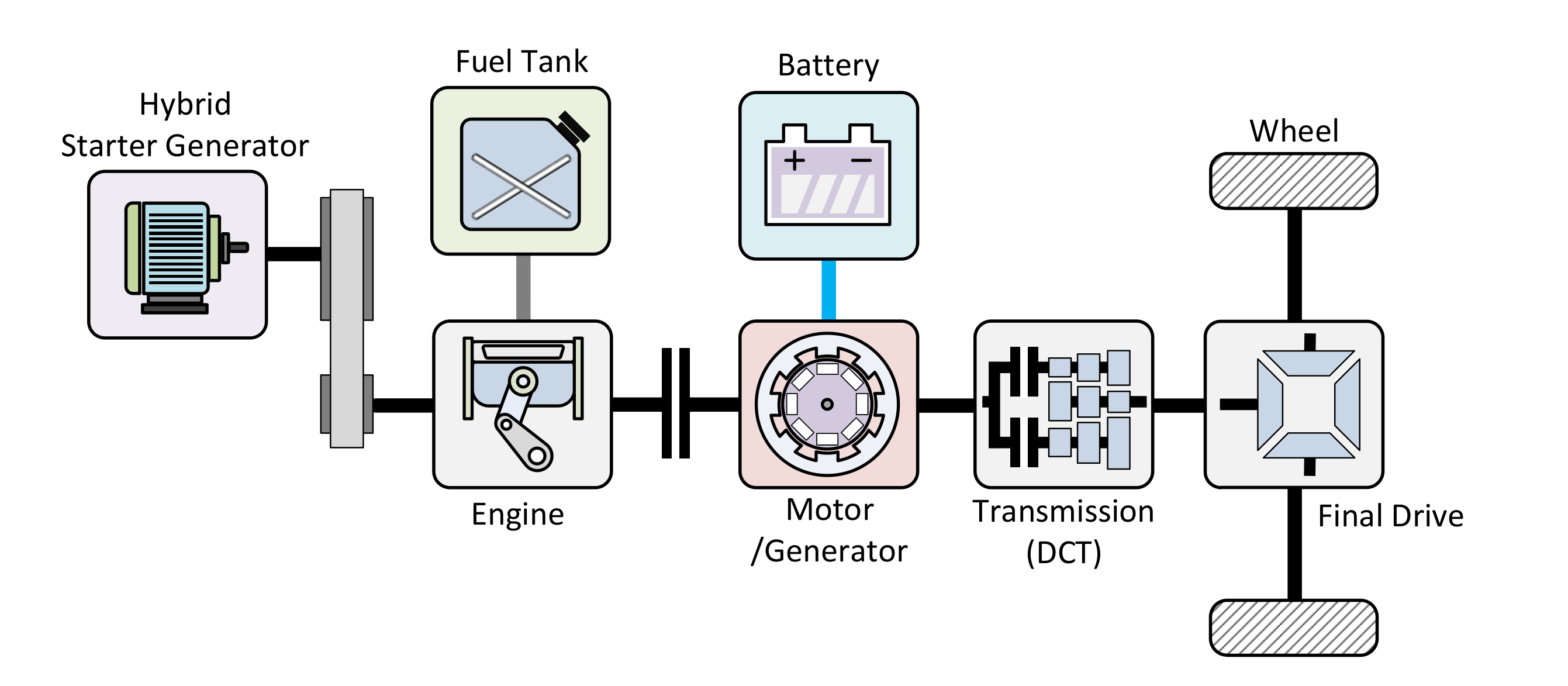
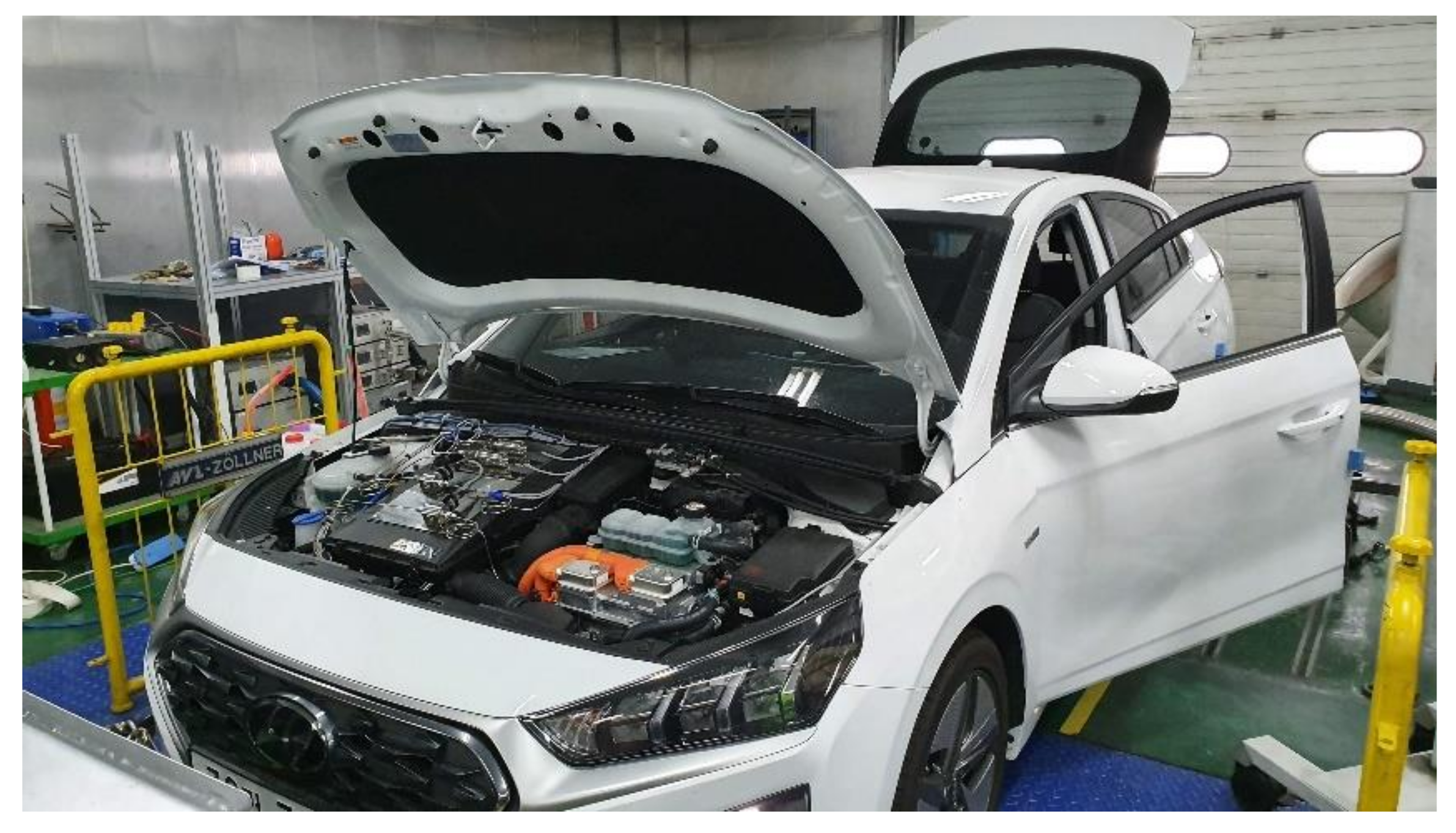
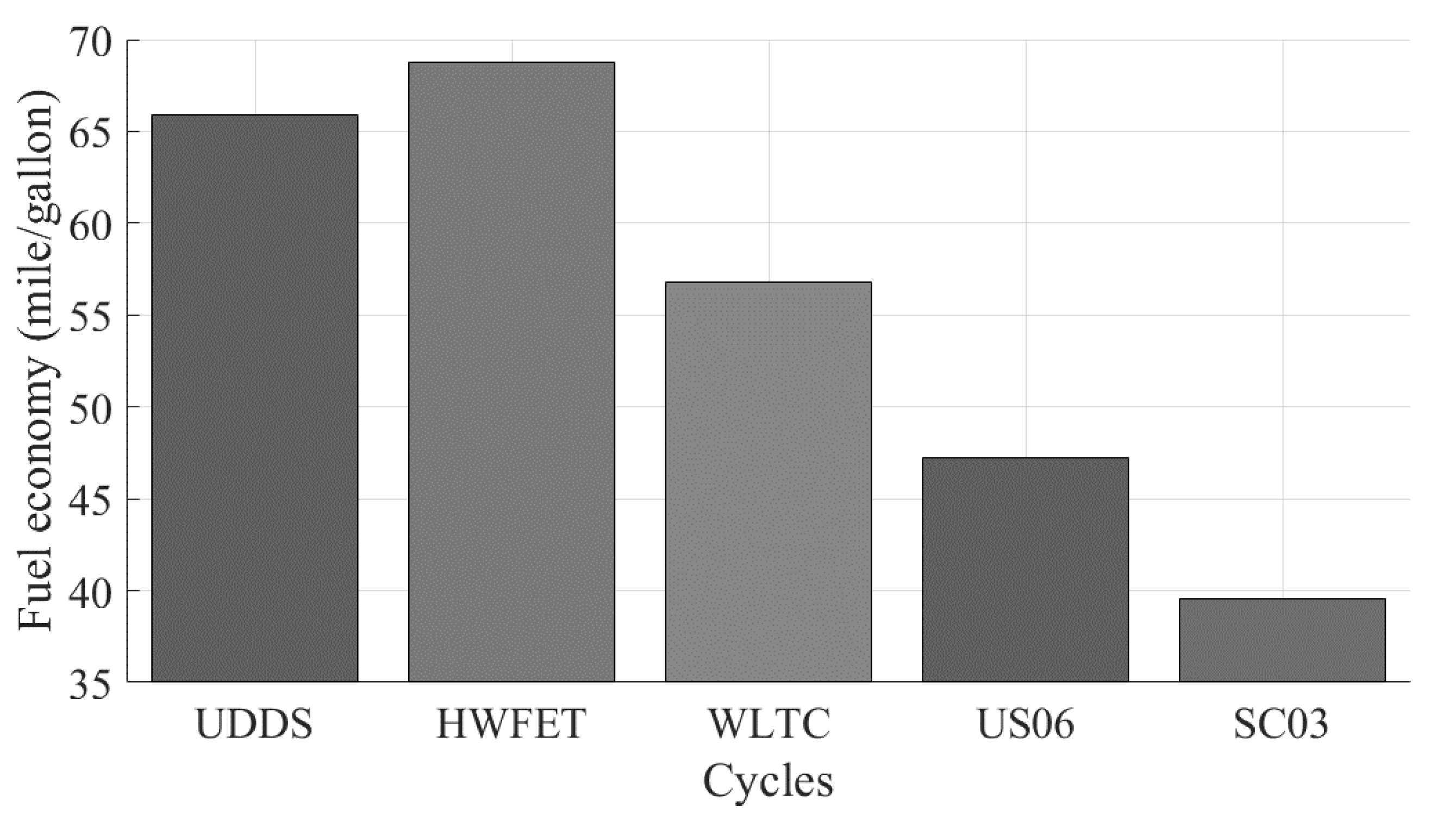

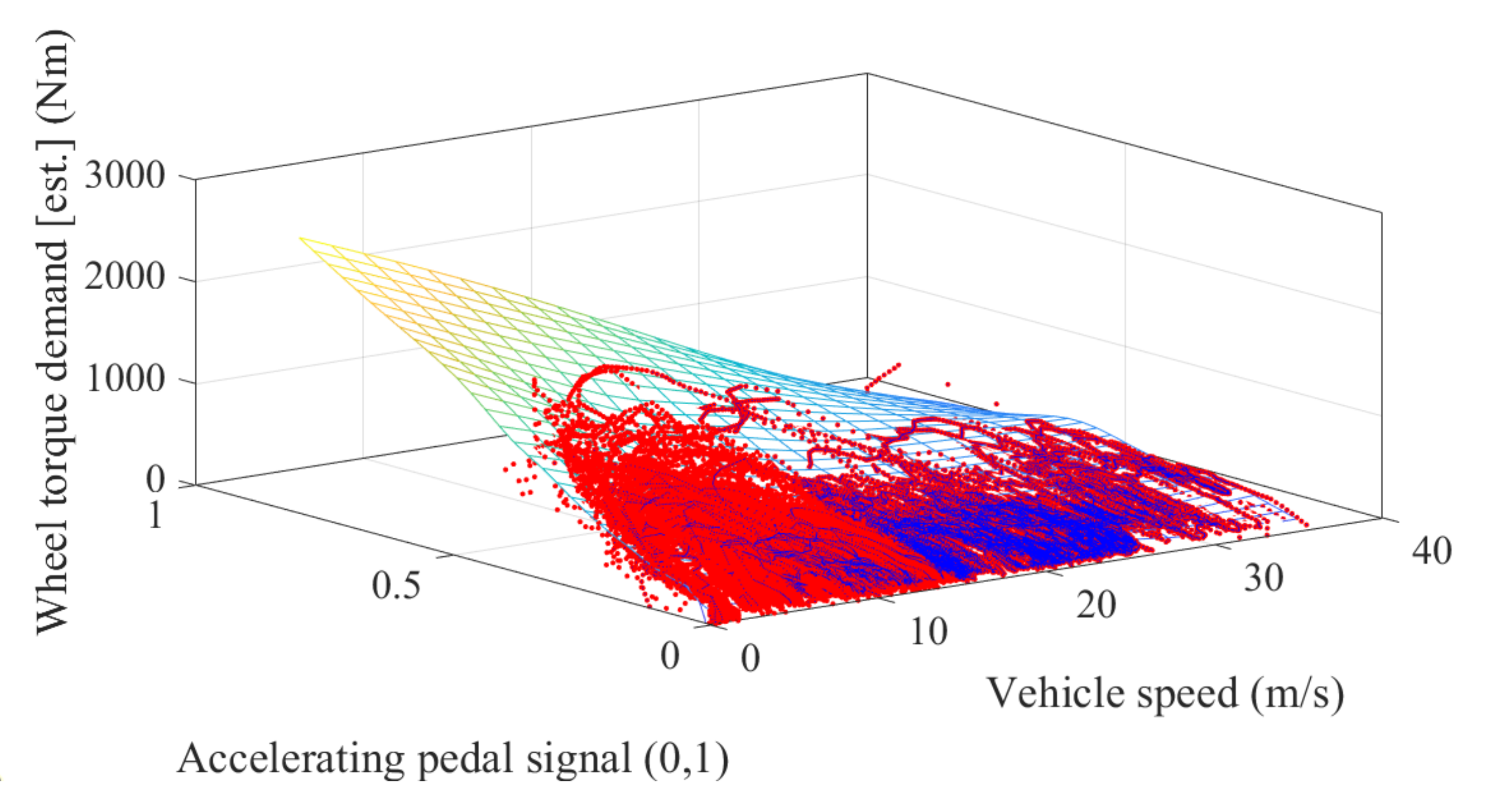
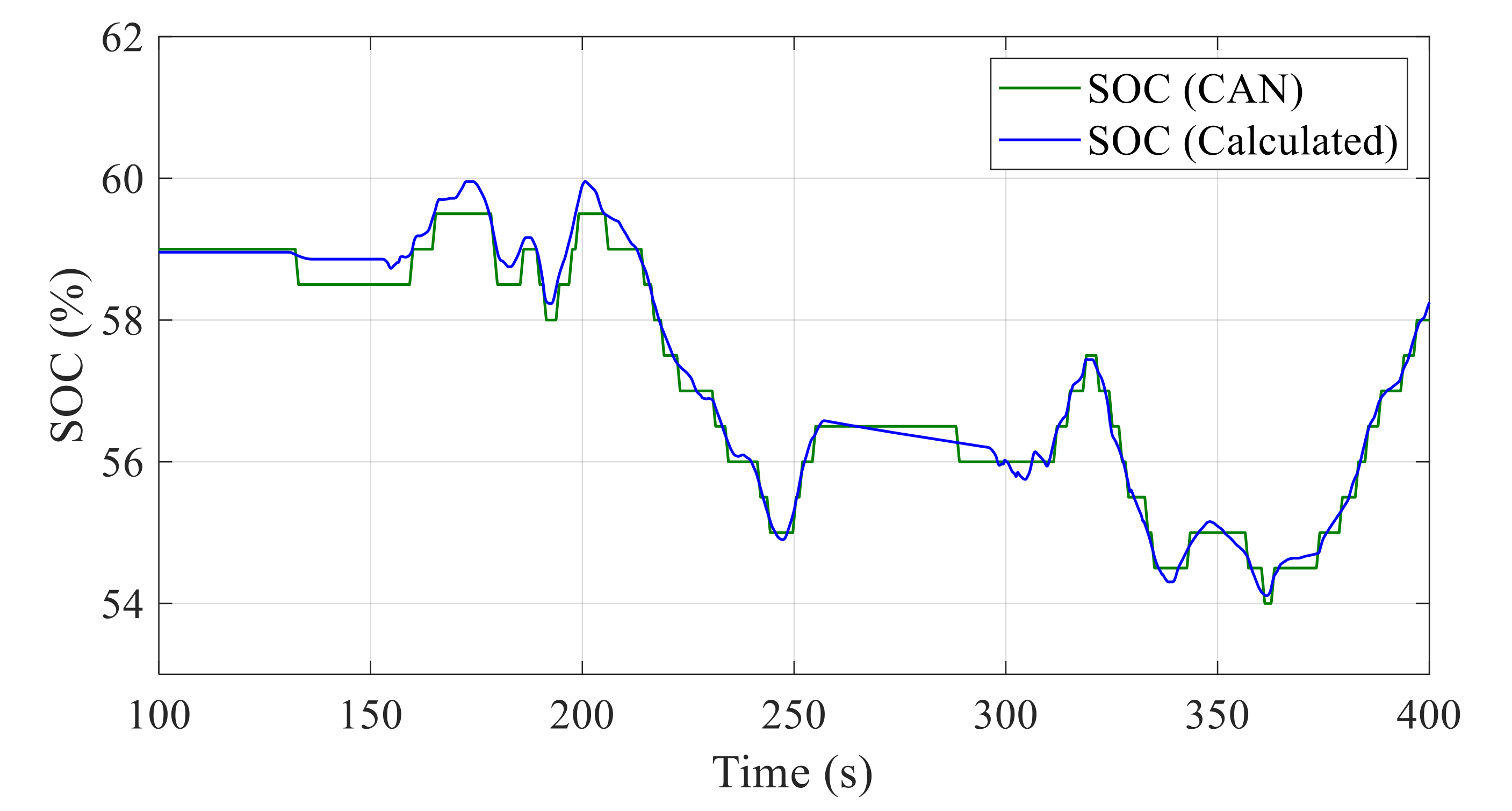
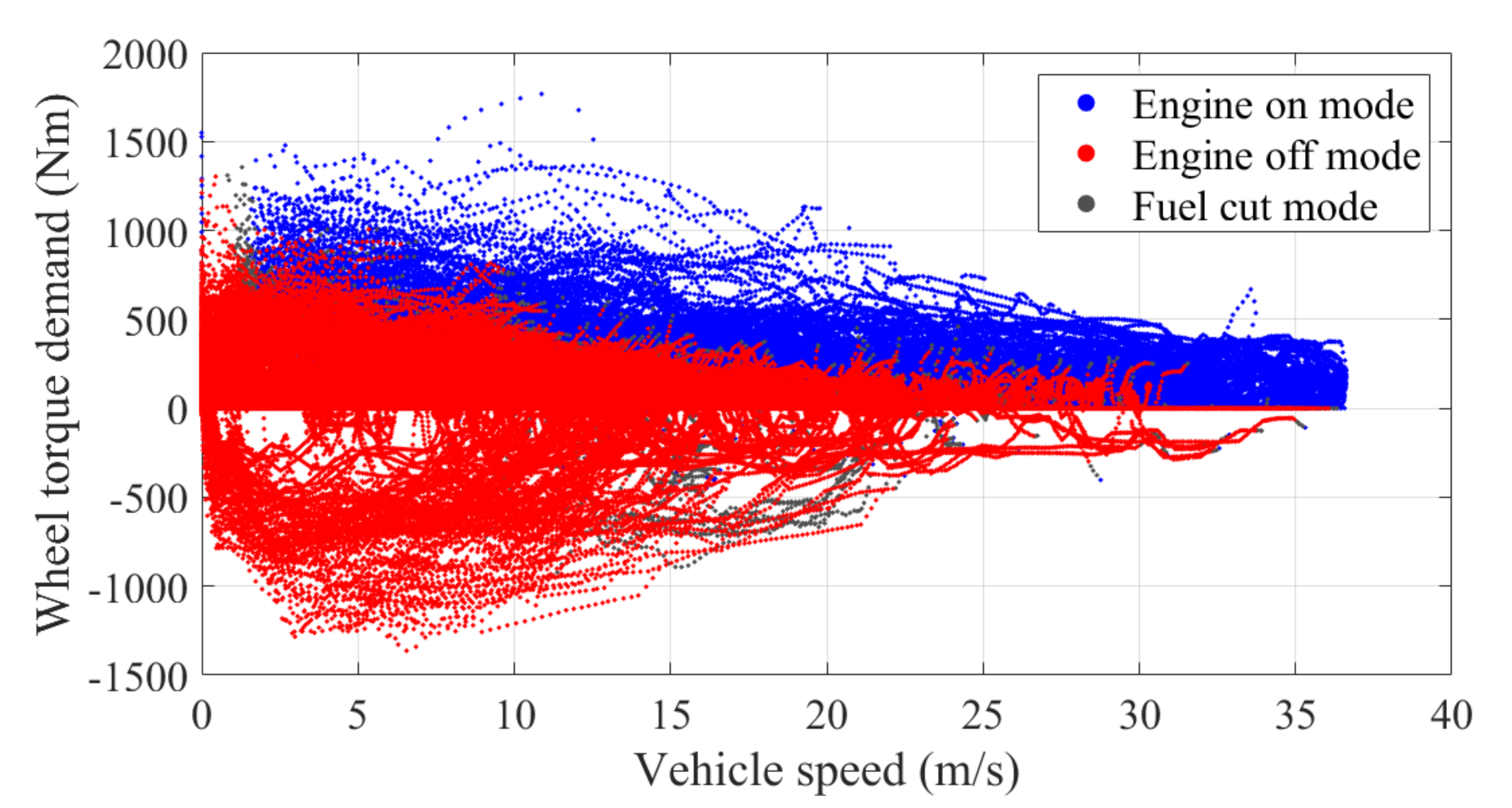
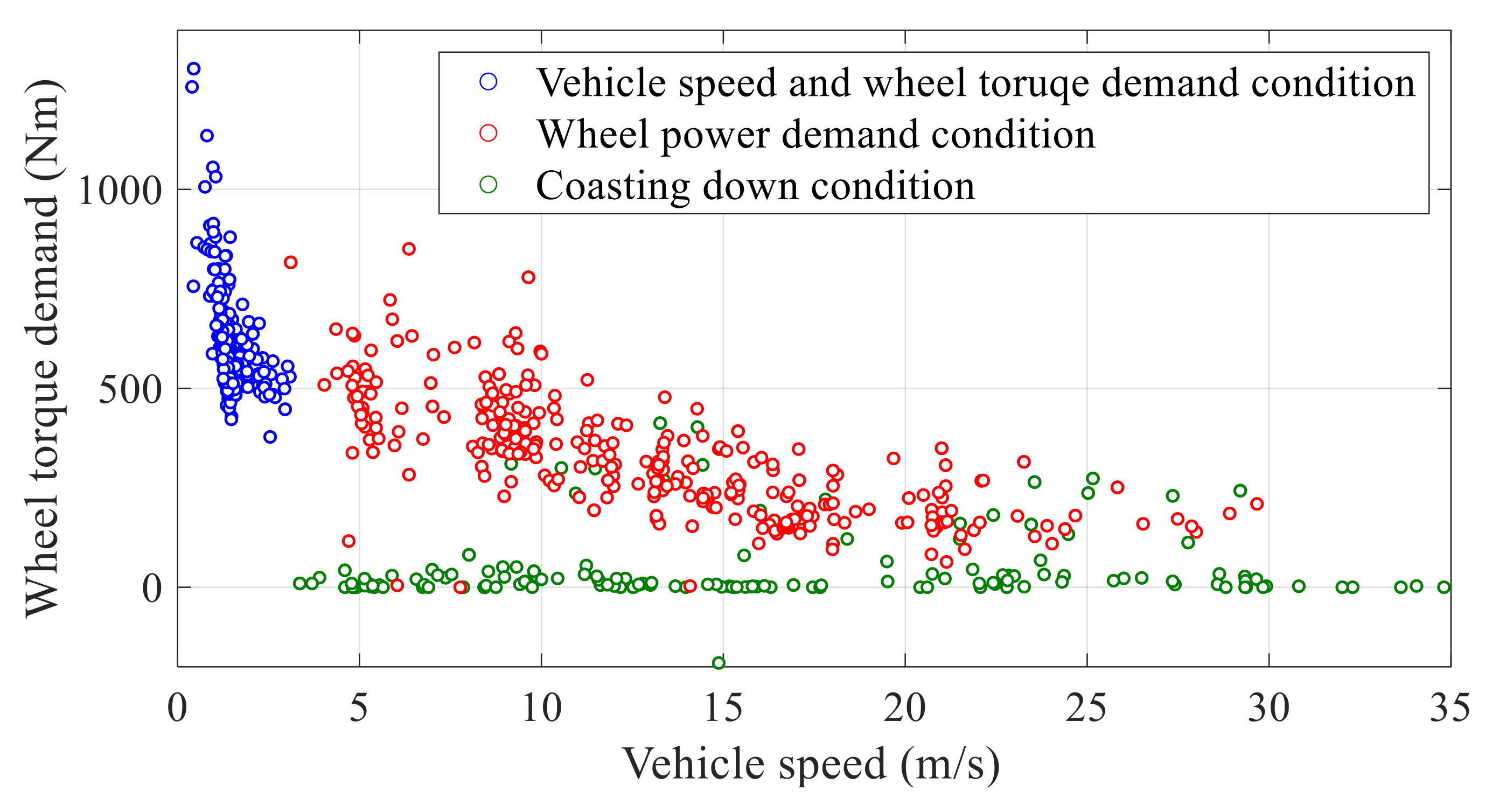
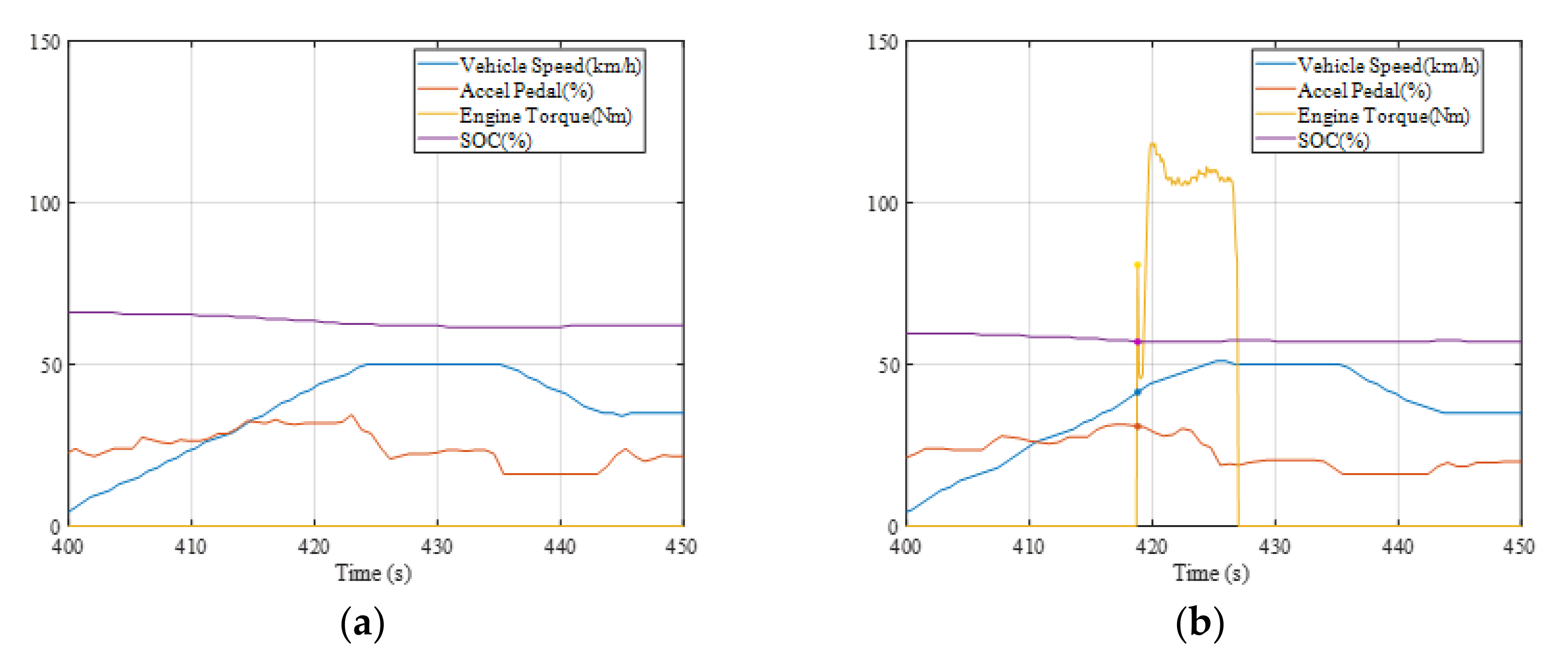
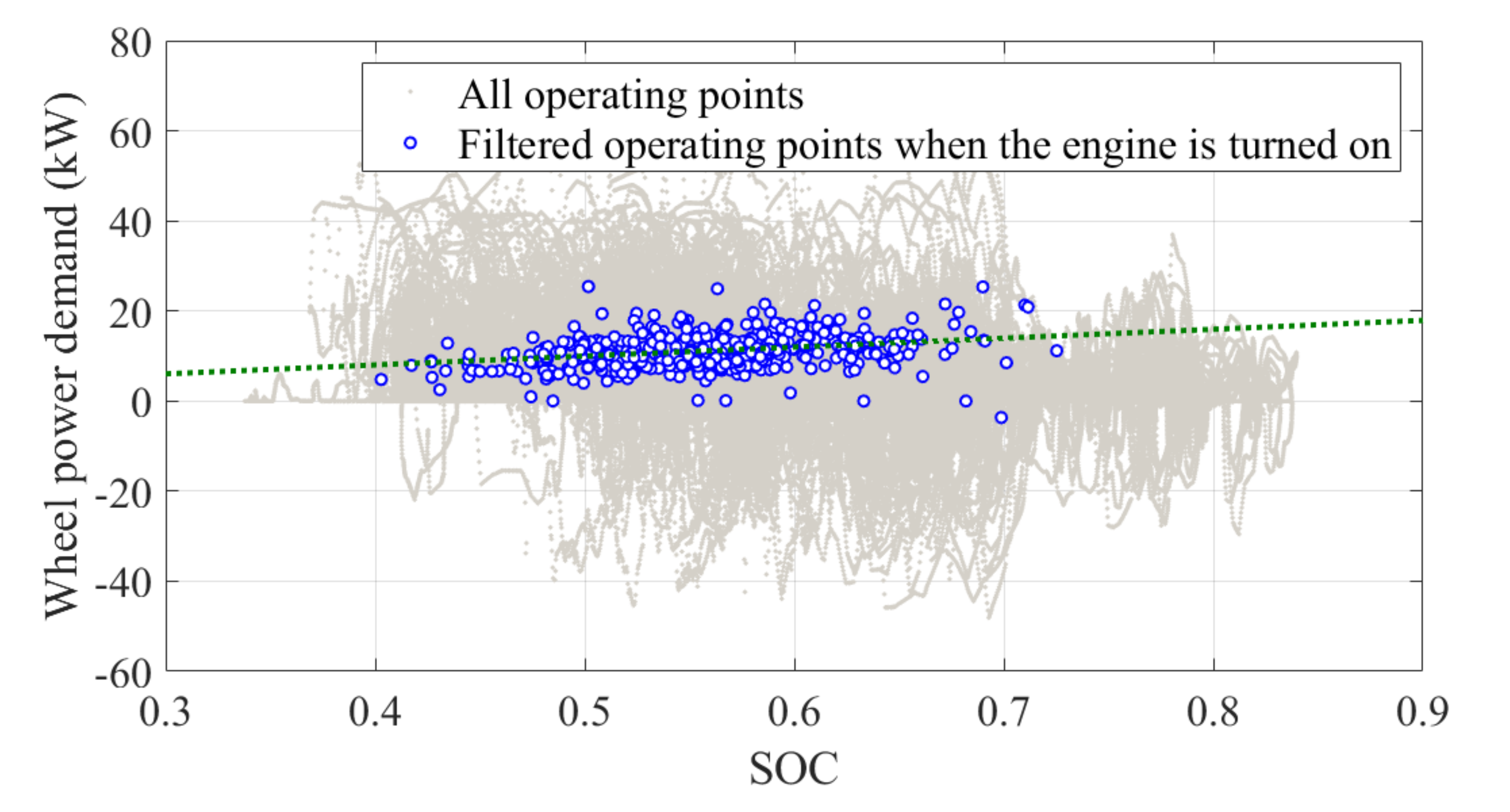
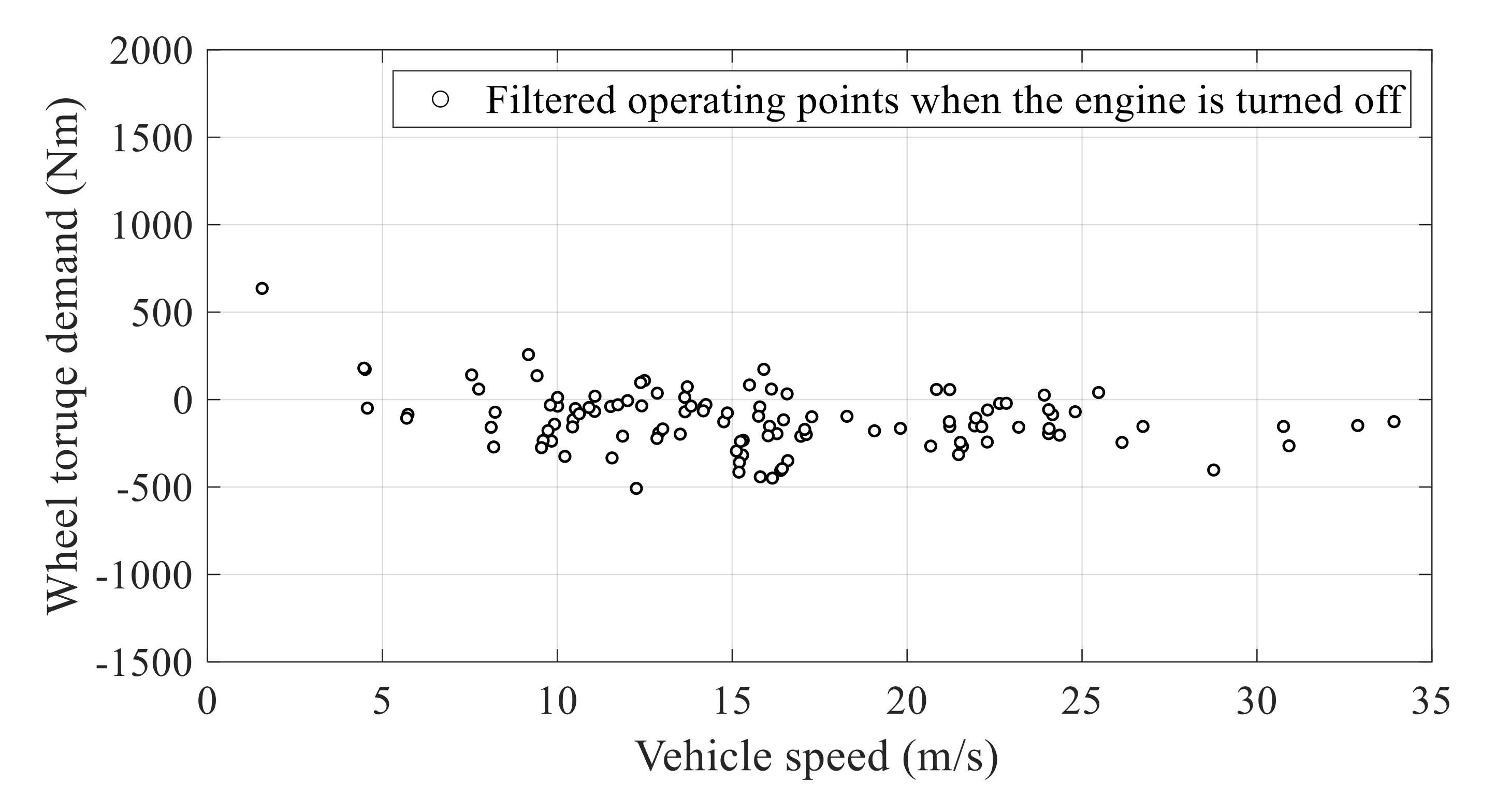
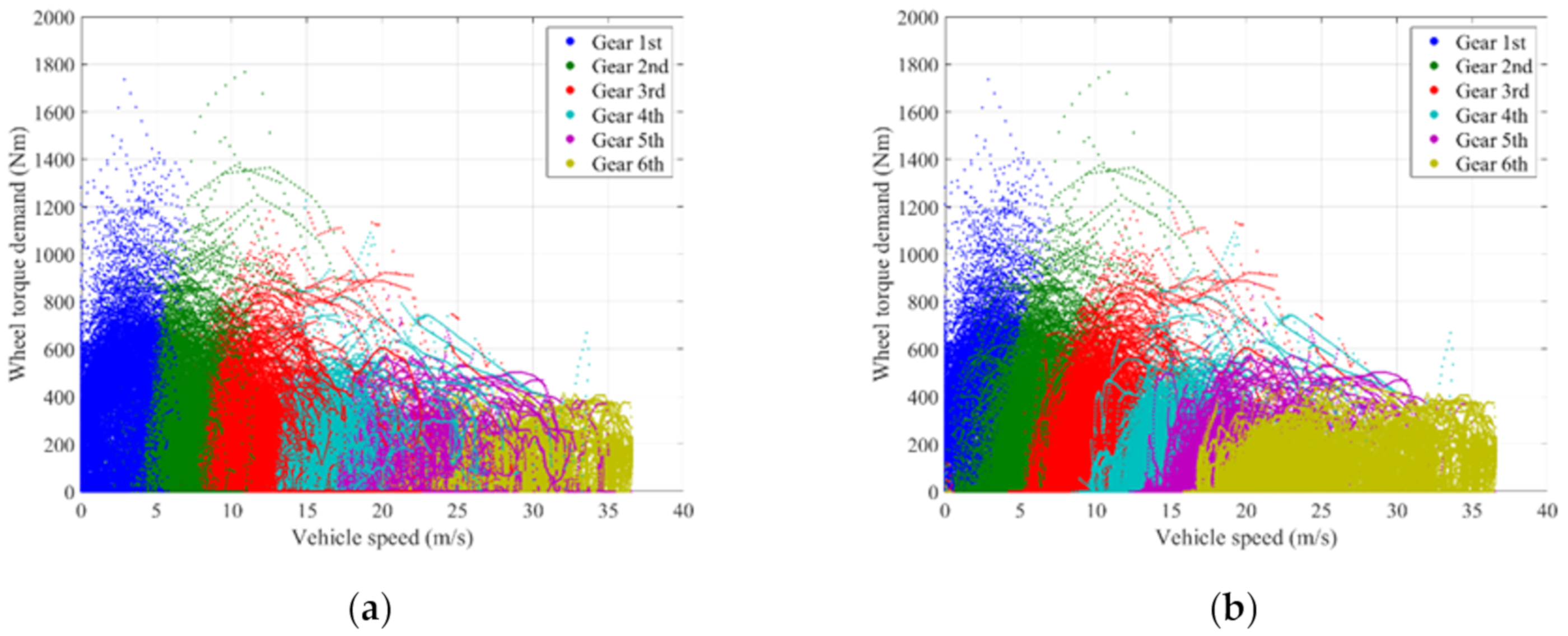
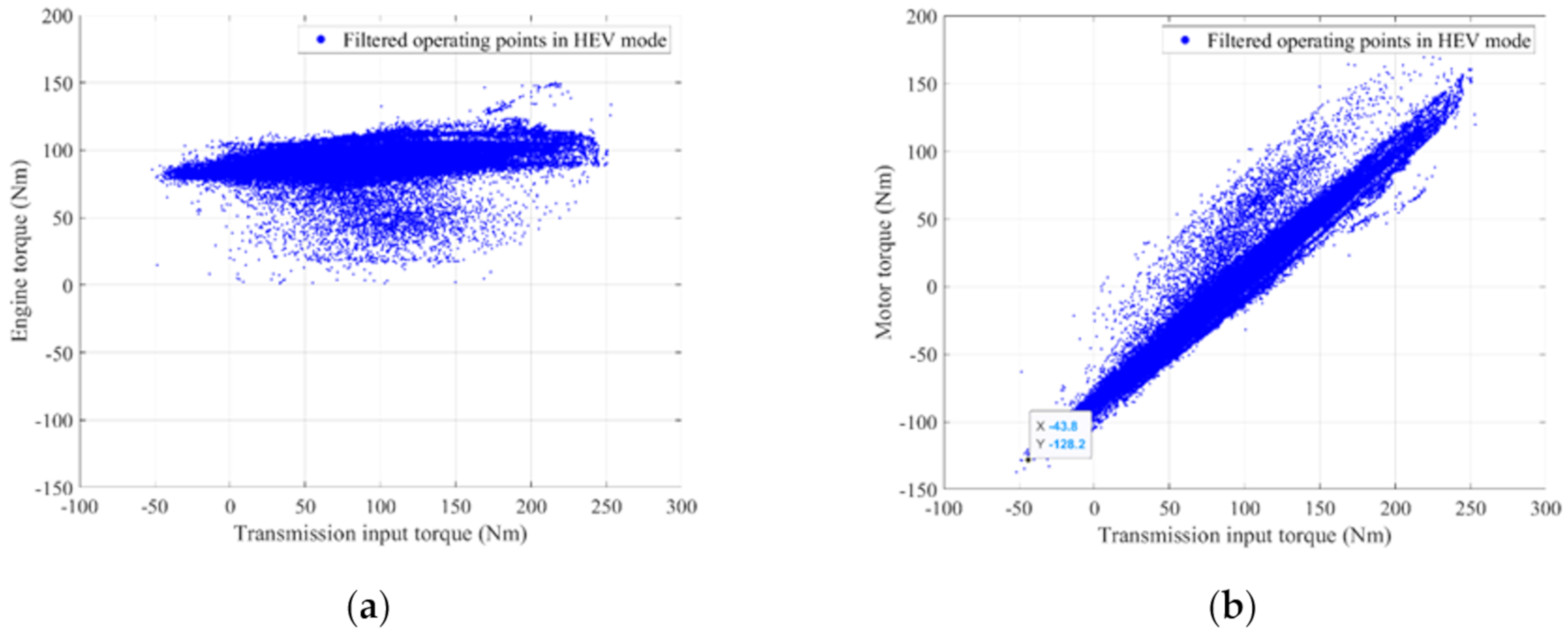
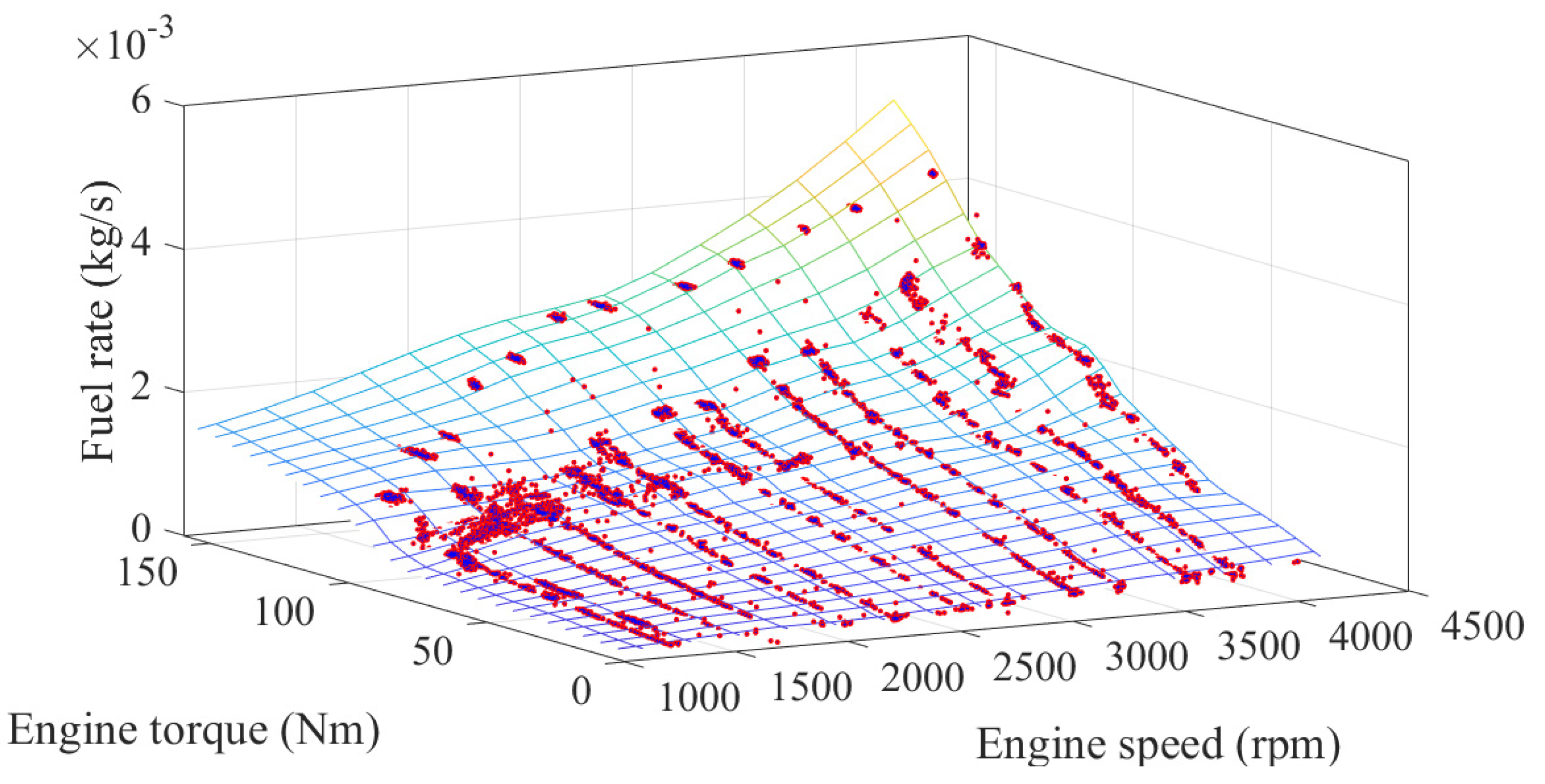
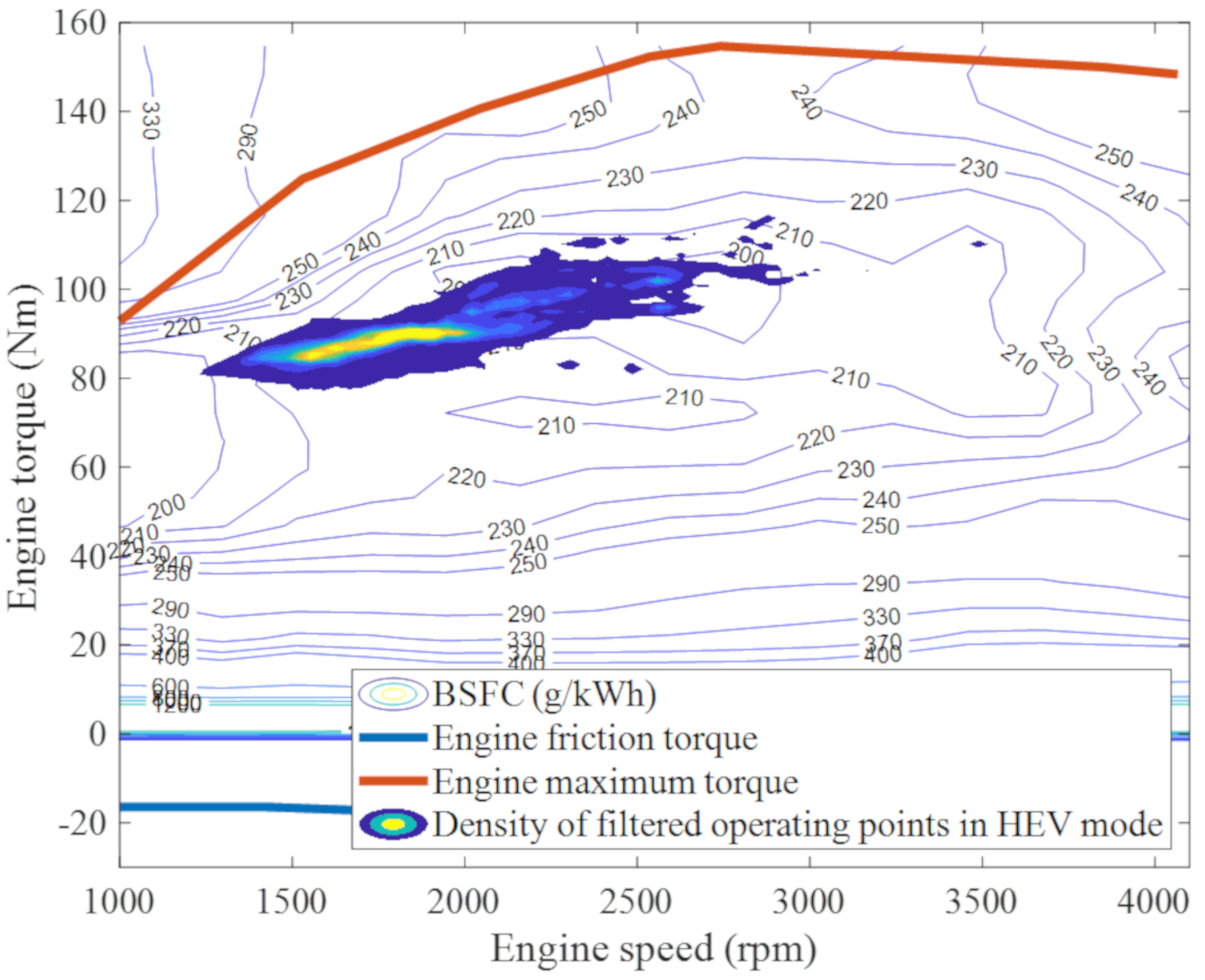

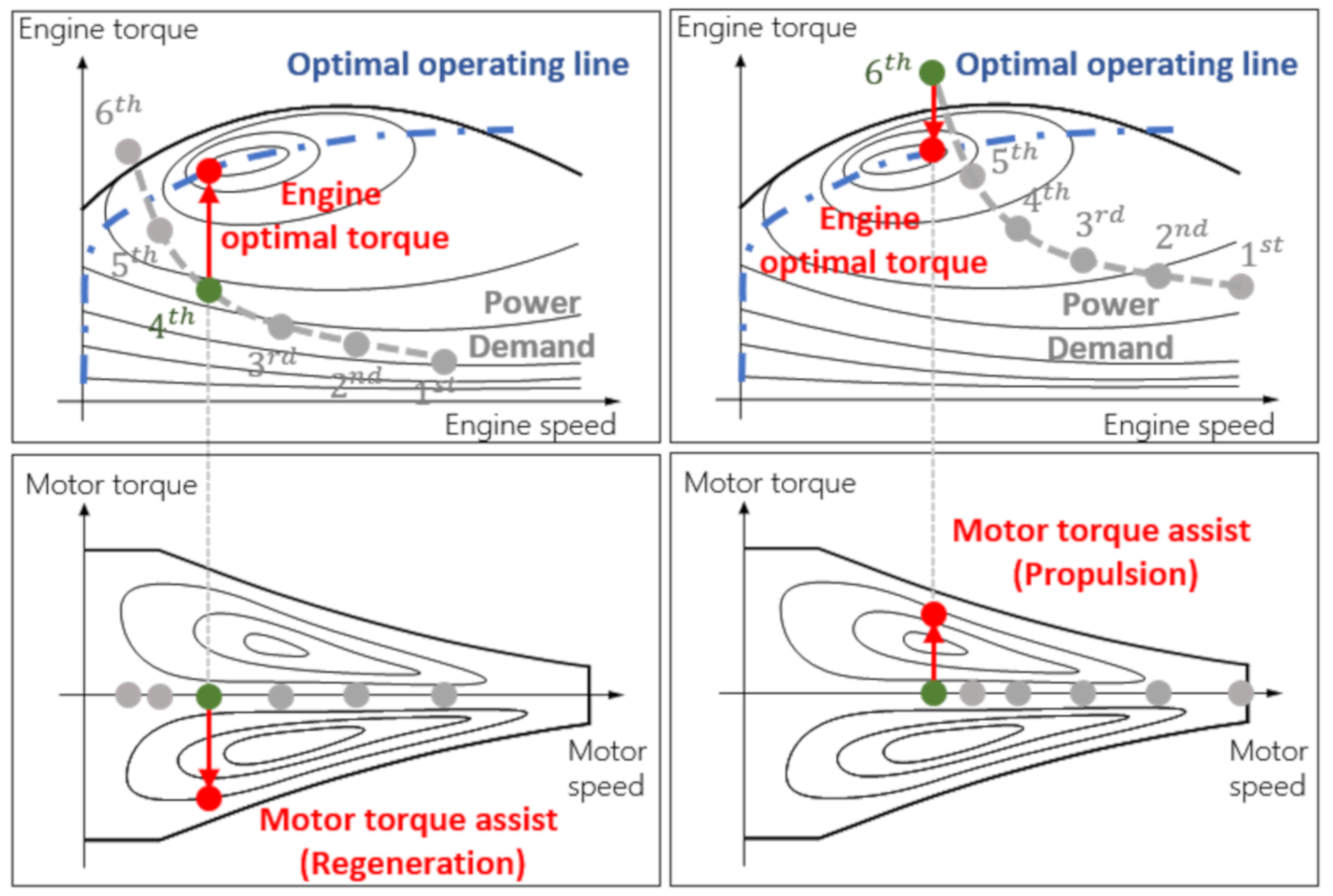
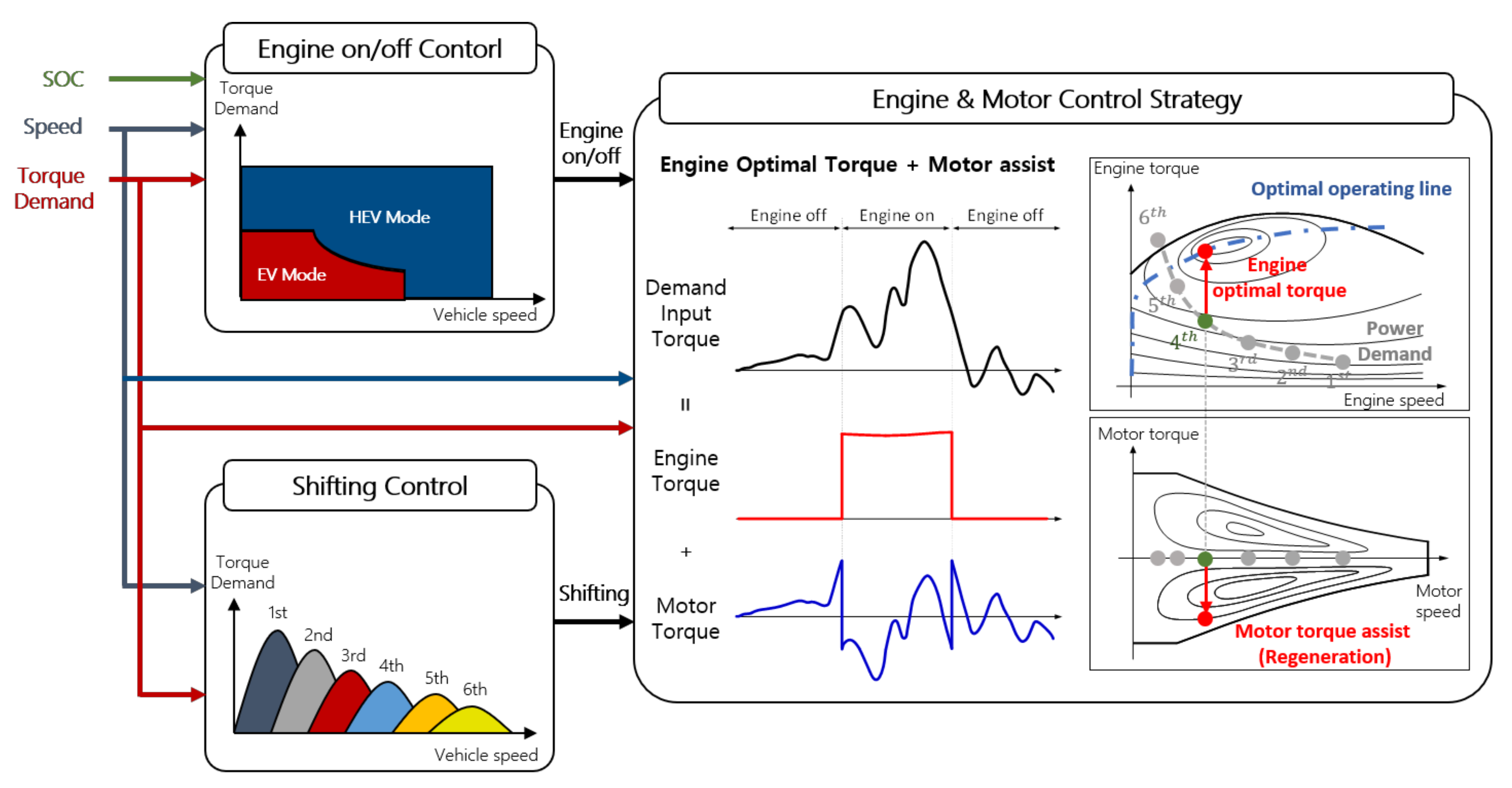
| Components | Value |
|---|---|
| Model Year | 2020 Year |
| Curb Weight | 1410 kg |
| Engine | 1.6 L, 78 kW@5700 rpm |
| Motor | 32 kW/170 Nm |
| Battery | Li-ion, 1.56 kWh |
| Gear Ratio | 3.867/2.217/1.371/0.930/0.956/0.767 |
| Final Drive Ratio | 4.188@1~4Gear/3.045@5,6Gear |
| Wheel | 225/45R17 |
| Type | Components | Number |
|---|---|---|
| Dynamometer Test | Partial Load Test | 5 |
| Full Load Test | 9 | |
| Cold Test | 13 | |
| Hot Test | 26 | |
| Real Driving Test | Cold Test | 5 |
| Hot Test | 2 |
© 2020 by the authors. Licensee MDPI, Basel, Switzerland. This article is an open access article distributed under the terms and conditions of the Creative Commons Attribution (CC BY) license (http://creativecommons.org/licenses/by/4.0/).
Share and Cite
Lee, W.; Kim, T.; Jeong, J.; Chung, J.; Kim, D.; Lee, B.; Kim, N. Control Analysis of a Real-World P2 Hybrid Electric Vehicle Based on Test Data. Energies 2020, 13, 4092. https://doi.org/10.3390/en13164092
Lee W, Kim T, Jeong J, Chung J, Kim D, Lee B, Kim N. Control Analysis of a Real-World P2 Hybrid Electric Vehicle Based on Test Data. Energies. 2020; 13(16):4092. https://doi.org/10.3390/en13164092
Chicago/Turabian StyleLee, Woong, Tacksu Kim, Jongryeol Jeong, Jaewoo Chung, Deokjin Kim, Beomho Lee, and Namwook Kim. 2020. "Control Analysis of a Real-World P2 Hybrid Electric Vehicle Based on Test Data" Energies 13, no. 16: 4092. https://doi.org/10.3390/en13164092
APA StyleLee, W., Kim, T., Jeong, J., Chung, J., Kim, D., Lee, B., & Kim, N. (2020). Control Analysis of a Real-World P2 Hybrid Electric Vehicle Based on Test Data. Energies, 13(16), 4092. https://doi.org/10.3390/en13164092






